I’m a mechanic - and here are the 8 bike maintenance mistakes you need to stop making in the New Year
ÆIGHT mechanic, Glen Whittington, guides you through the faux pas that could be costing you time, money, and watts
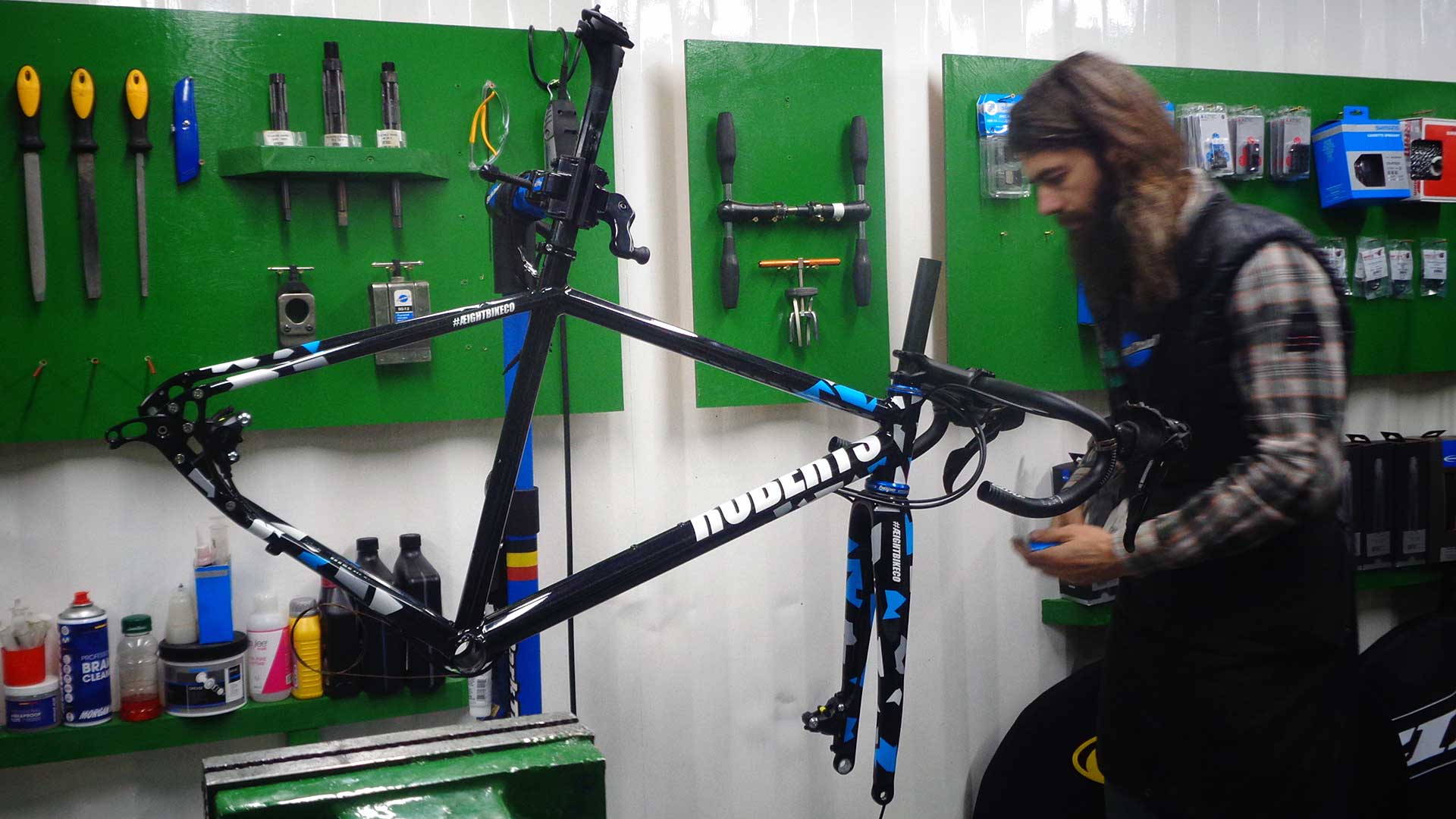
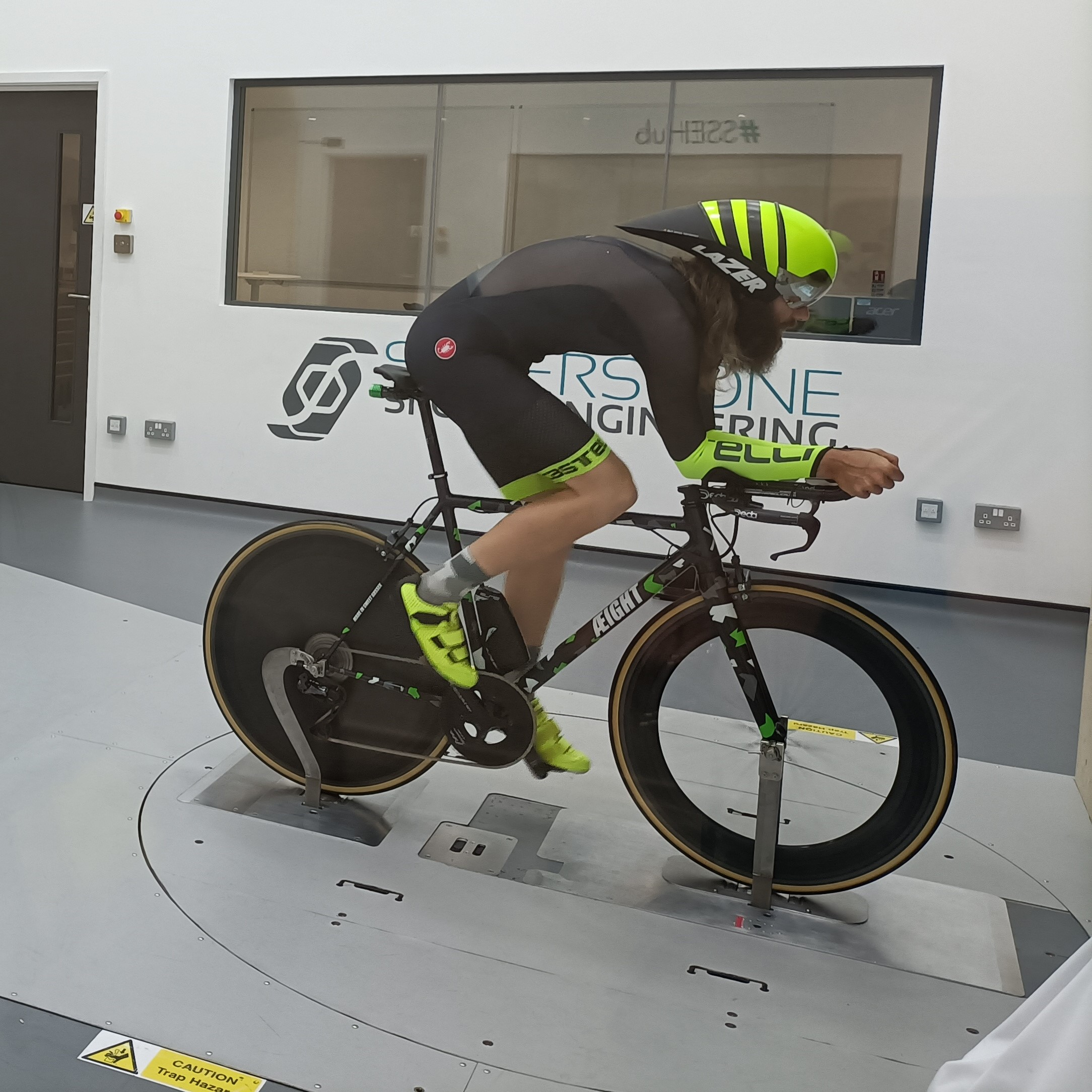
Working on your bike at home can be rewarding and many of the smaller jobs are easily achievable with a basic set of tools and, more importantly, knowledge.
A word to the wise though, don’t trust everything you see on social media, or on YouTube. Here are eight bike maintenance mistakes you can stop making, now.
Don’t cost yourself money by skipping the basics
If you’re going to do only one thing to your bike on a regular basis, make sure that thing is drivetrain cleaning. Ideally, this would be stage one of a full bike wash, every two or three rides in the winter. But if you really don’t have time to do the whole bike, focus on the drivetrain. It’s the most expensive part of your bike after the frame, and the easiest to ignore for a lot of people. Cleaning it is one of the easiest ways to save money and go faster.
Avoid aerosols at all costs due to the likelihood of contamination, and instead invest in a clip-on chain bath/scrubber, which attaches to the chain and works as you back pedal. You only need to back pedal for thirty seconds or so, and then use a brush to scrub the cassette, mechs and chainset.
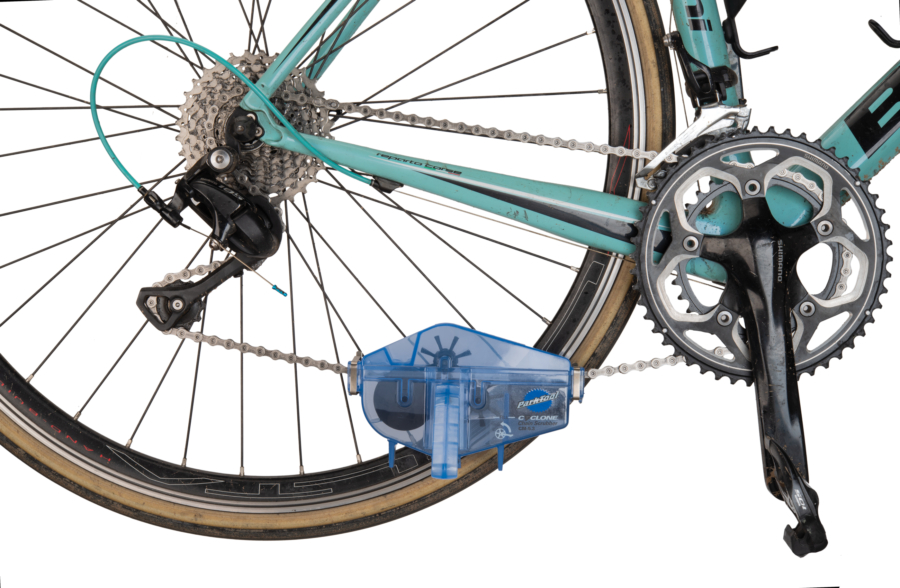
A chain bath/scrubber is the best tool for the job
Rinse with clean water immediately and then wash the rest of the bike if time allows. But don’t forget to fully dry your drivetrain before applying your favourite lube or wax, to avoid any surface rust.
Don’t forget the backside
A common mistake I see when it comes to drivetrain cleaning is forgetting to clean the back side of the chainset, cassette, and completely missing the pulley wheels. People often turn up at the workshop and proudly announce that they cleaned their bike for me (which I actually do really appreciate), but upon closer inspection, it’s not quite as good as we were both hoping.
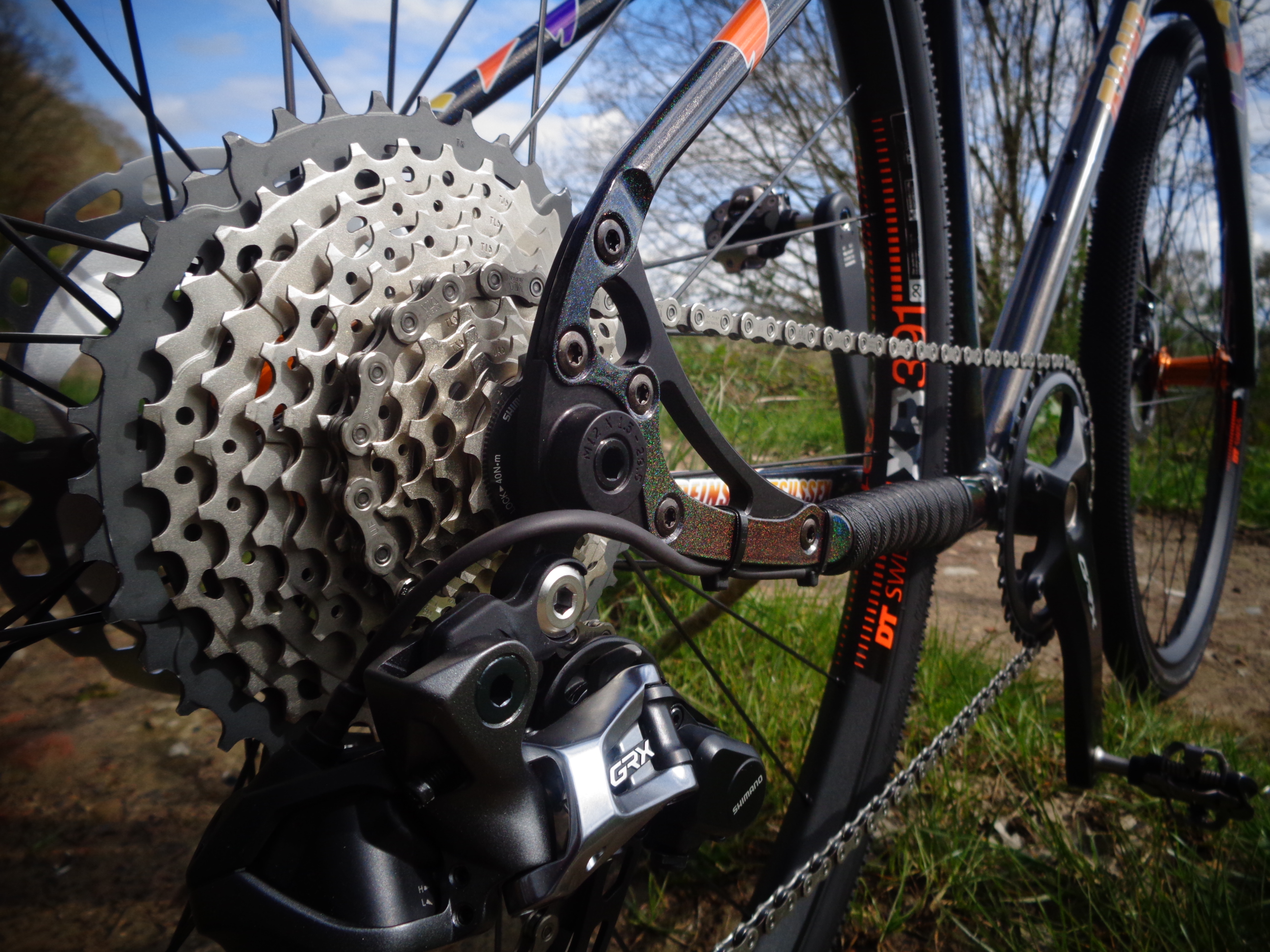
Clean the front, and the back!
If you’ve cleaned everything from the driveside of the bike, don’t forget to turn the bike around and give the backside of the parts a brush too, as it’s surprising how much filth can be hiding. Once it’s up in the workstand, a bike that looked quite presentable, can actually be pretty grubby. The key bits that everyone misses are the pulley (or jockey) wheels - the inside of the top one is the most awkward to get to and often has a good layer of gunk on it. A toothbrush and a tiny bit of degreaser will clean all these problem spots, and again make sure you rinse and then dry the parts out afterwards.
Don’t cost yourself watts with the wrong lube
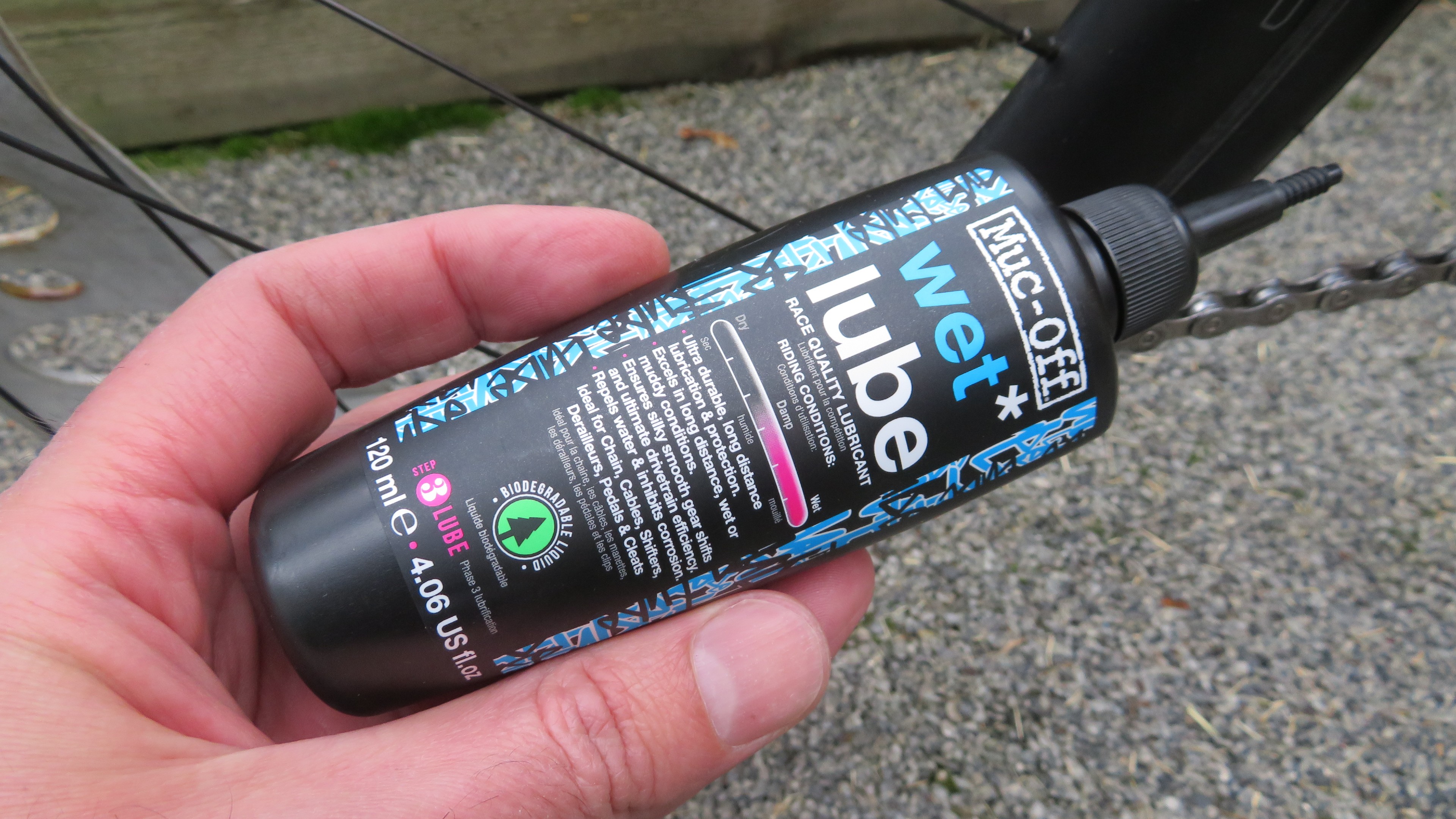
Make your selection carefully
Make sure you’re using the right chain lube or wax for the conditions you’re riding or racing in. In many cases, with the race bikes and club bikes I work on, I’d recommend wax because it's cleaner and quieter, but wax doesn’t work that well in the winter.
If you do apply a hot wax treatment to the chain, you’ll need to top it up with drip wax virtually every time you ride during the winter. That’s probably okay for your best bike on a Sunday, but it won’t work on your everyday commuter - for that I’d recommend a good quality lube and a thorough wash once a week. The lube has the benefit of protecting the chain and cassette even when it’s dirty which you won’t get with wax. Whichever solution you go for, once again avoid aerosols and find a drip lube or wax which works for you.
Don’t assume that as long as your tyres are inflated, they’re fine
Modern tyres are so much better than they used to be, but they’re not invincible - a regular check can save you having to replace them, by fixing small problems before they get bigger. Wash the tyres off as part of your normal routine, but then spend a bit of time checking them for debris.
The temptation, especially when running a tubeless system, is to leave something like a thorn in place, but if not addressed, it’s bound to become a problem when you least want it - it’s much better to fix that tyre now in the dry, rather than on a cold, wet, dark commute! Remove any and all debris from the tyre and any small holes will usually fix themselves when you simply rotate the tyre past the point of the hole. If that doesn’t work, it’s the perfect time to practice fitting a tubeless plug, when you’re not under pressure!
Don’t be squeaky!
Brake pad contamination can ruin your ride, annoy your buddies, and can lead to expensive repair bills, but don’t overdo the brake cleaner as this can often just soak contaminates into the pad itself!
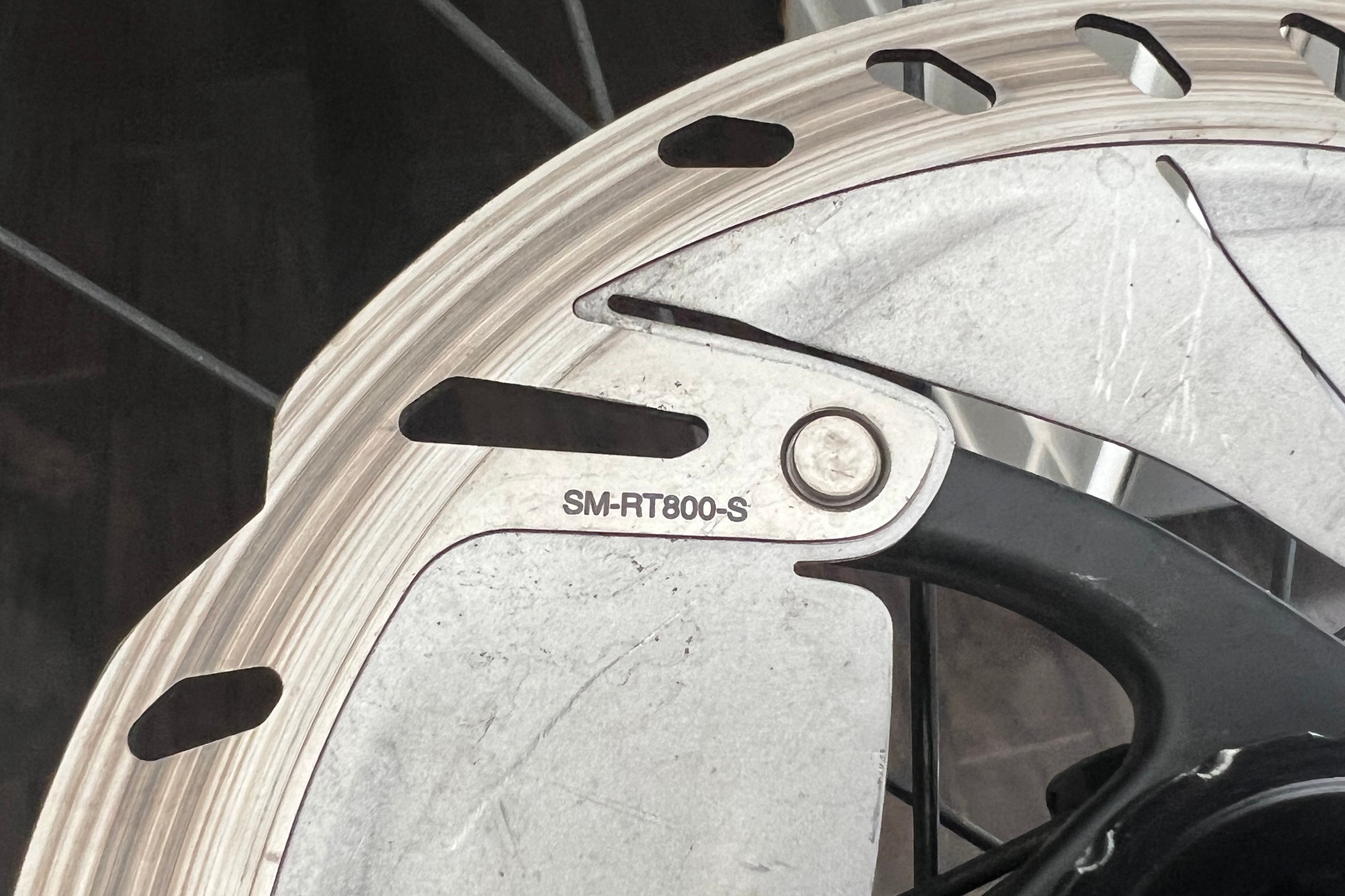
Looks after your pads and rotors
The very best thing to clean your brakes with is warm water, and if you clean them straight after a wet ride, the dirt and contaminants will come off surprisingly easily. As with all bike cleaning duties, little and often is far better than leaving it until it becomes a problem. It’s commonly the reason why gravel and cyclocross bikes are often easier to work on than road bikes, because the dirt is easier to hide on a road bike. Off-road bikes are obviously muddy and therefore are often washed after each use, but the dirt and grime that plasters a road bike can be well hidden or even invisible, but potentially more damaging.
Your road bike brakes are likely to have all kinds of oils, fuels, rubbers and pollutants on them and that's what leads to the dreaded squeal. Reduce this by thoroughly rinsing the brake and rotor area towards the end of the bike wash.
Don’t be wobbly!
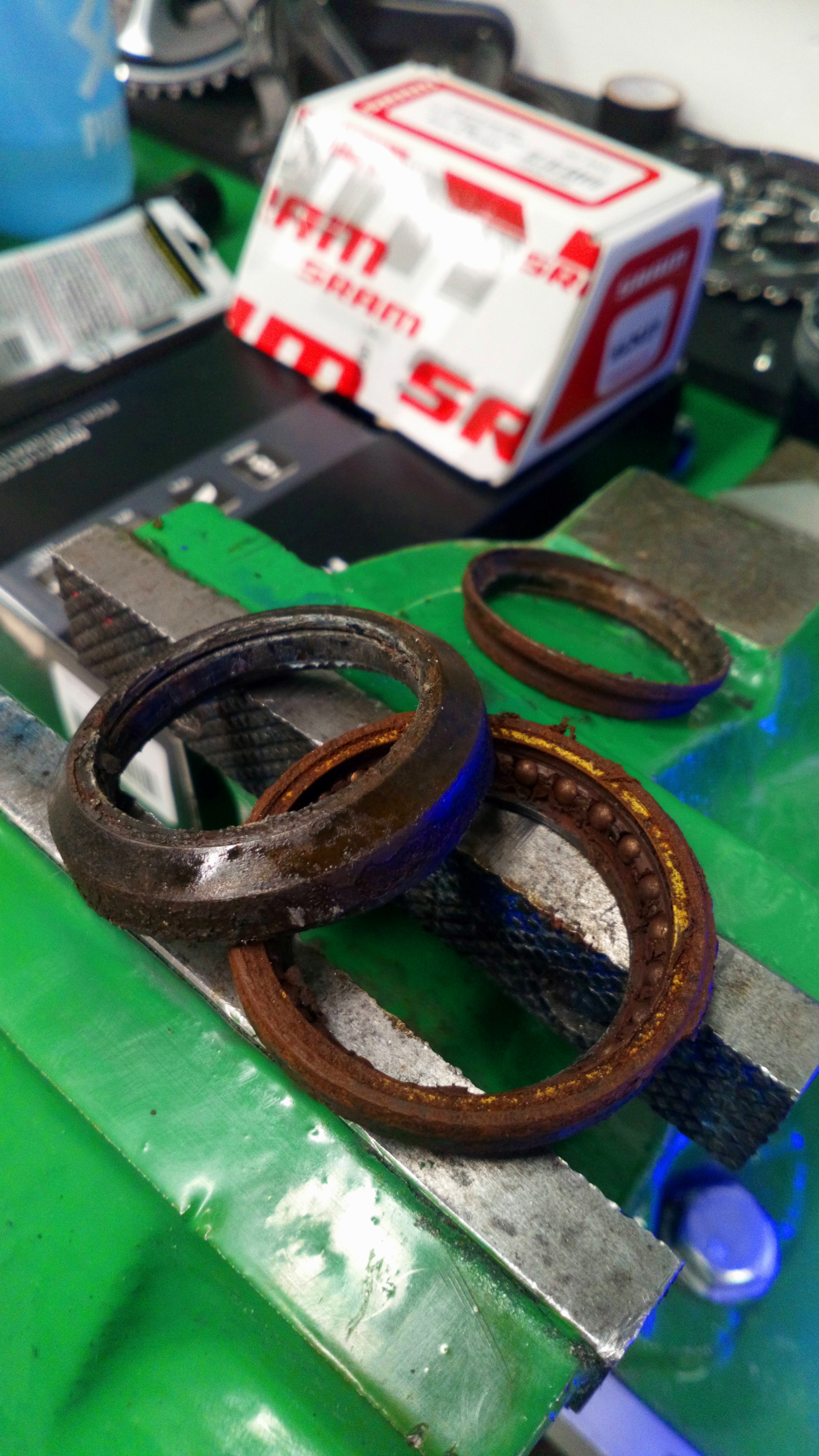
Check in with a mechanic before things get this bad
Learn how to check for bearing play in your wheels, headset and chainset. The winter months can accelerate wear and tear on the parts of your bike which you can’t see, and a bearing swap might not be something you want to tackle at home. In many cases a trip to a professional workshop will save you money, but understanding how to spot these problems and knowing when to act, can help you time it just right.
I won’t run through the whole process - you’re best asking your local bike shop mechanic for a demonstration - but essentially checking all the bearings in your bike involves a similar routine of rocking the component against the axle, and, if you catch any potential play or roughness early enough it may be possible to save the bearing by servicing and regreasing it, rather than costly replacements.
Know that not everything can be fixed with GT85 or WD40!
This is a hotly misunderstood topic, especially for beginners.
Let’s be clear: both of these products are fantastic when used properly. But, neither is suitable as bicycle chain lubricant. Confusingly, both do have some lubrication properties, and even more confusingly both brands have at one time or another, offered specific bike chain lubes that are branded with the famous logos - perhaps causing much of the misunderstanding.
Both of the popular aerosol products are primarily “water displacers” rather than chain lubes. In some instances, I've used a light spray of GT85 to protect a chain and cassette - for example, if I’ve returned from a late training ride and didn’t have time for a thorough bike wash; the product will drive out water and leave a protective film on the drivetrain. However, this is a preventative measure before I can clean everything properly and use a much thicker bike specific chain lube.
GT85 and WD40 are both great in the workshop, for polishing metal parts, to remove surface grime and protect against rust. But always use them by spraying them onto a rag first rather than spraying the bike, as they are guaranteed to overspray everywhere that you don’t want them!
Change that dirty bar tape
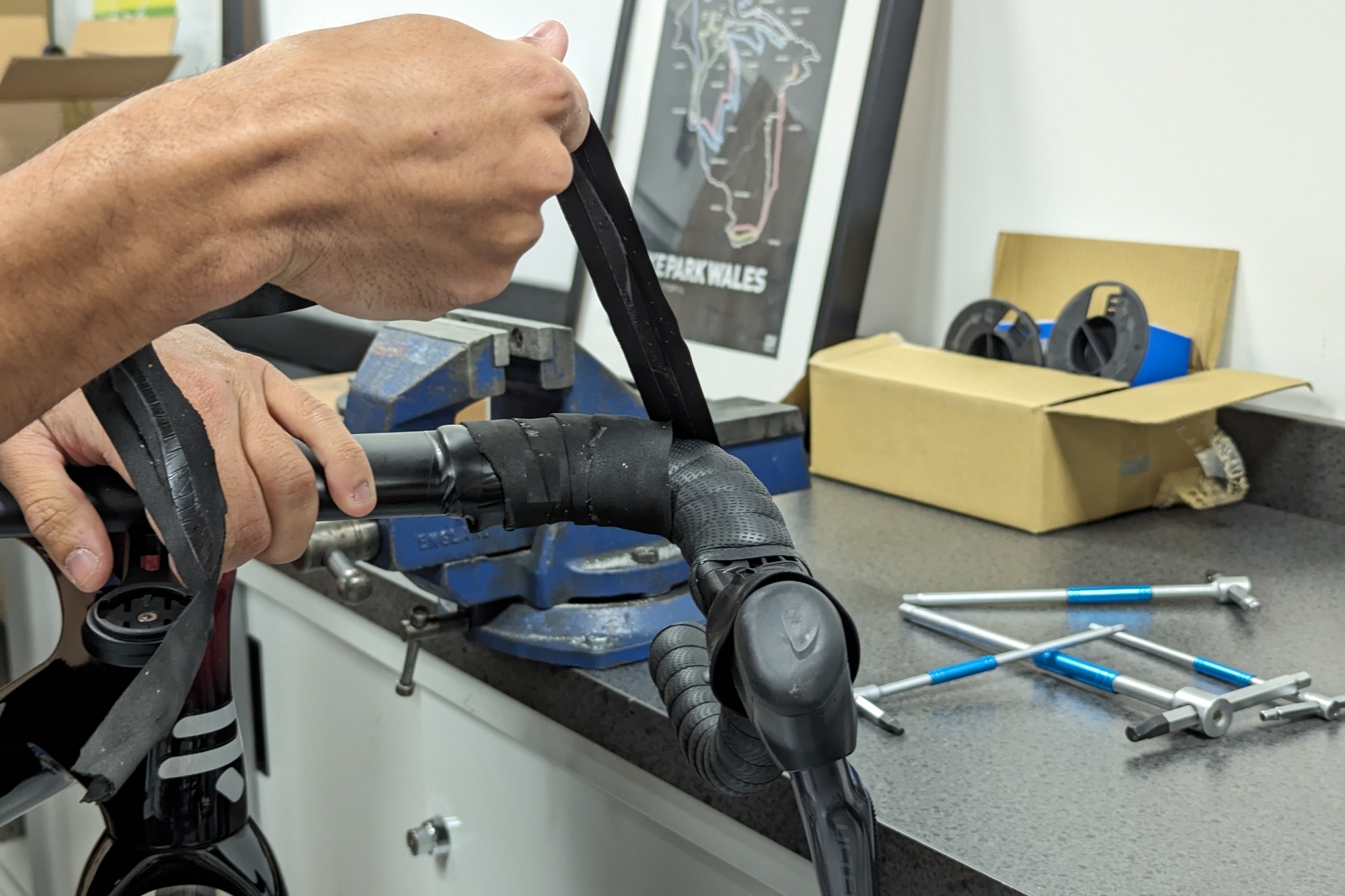
All manner of nasties can hide under old, dirty tape
Dirty bar tape is a pet hate of all mechanics in the world, but there is a serious side to this too! At the very least dirty bar tape sets a bad impression. But there’s more to it: dirty, and specifically, sweaty bar tape can hide all manner of wrongs underneath it.
We all sweat to different degrees and the salt that is in that sweat will make short work of your aluminium handlebars, especially where the shifters clamp on, underneath that filthy tape. Galvanic corrosion is sped up by warm salty water and it’s not uncommon to see handlebars completely fail. Obviously, you don’t want that happening during a ride. Learn to wrap your own bars at home, buy some different coloured tapes and have fun with it, as it’ll freshen your bike up in more ways than one. It’s a really rewarding skill to learn and if you don’t get the hang of it, it can be fixed cheaply and easily.

Thank you for reading 20 articles this month* Join now for unlimited access
Enjoy your first month for just £1 / $1 / €1
*Read 5 free articles per month without a subscription

Join now for unlimited access
Try first month for just £1 / $1 / €1
Get The Leadout Newsletter
The latest race content, interviews, features, reviews and expert buying guides, direct to your inbox!

Glen’s an ex-racer who still finds time to ride bikes for SDWRacing. He started racing in 1998, initially specialising in XCO and Solo 24-Hour Mountain Bike. He became a mechanic in 2002, working in shops and also for professional race teams. During this time he spent more time racing cyclocross and road, and then also time trials. In 2013 he built his first bespoke frame and then spent several years at Roberts learning the art. Since then he’s designed, tested and now sells frames/bikes to the public as part of his ÆIGHT brand.
You must confirm your public display name before commenting
Please logout and then login again, you will then be prompted to enter your display name.
-
 Sunglasses brand 100% pledges to pay Giulio Ciccone's fine for throwing his shades
Sunglasses brand 100% pledges to pay Giulio Ciccone's fine for throwing his shades100% says "this one's on us" after Italian charged 250 Swiss Francs at Tour of the Alps
By Tom Davidson
-
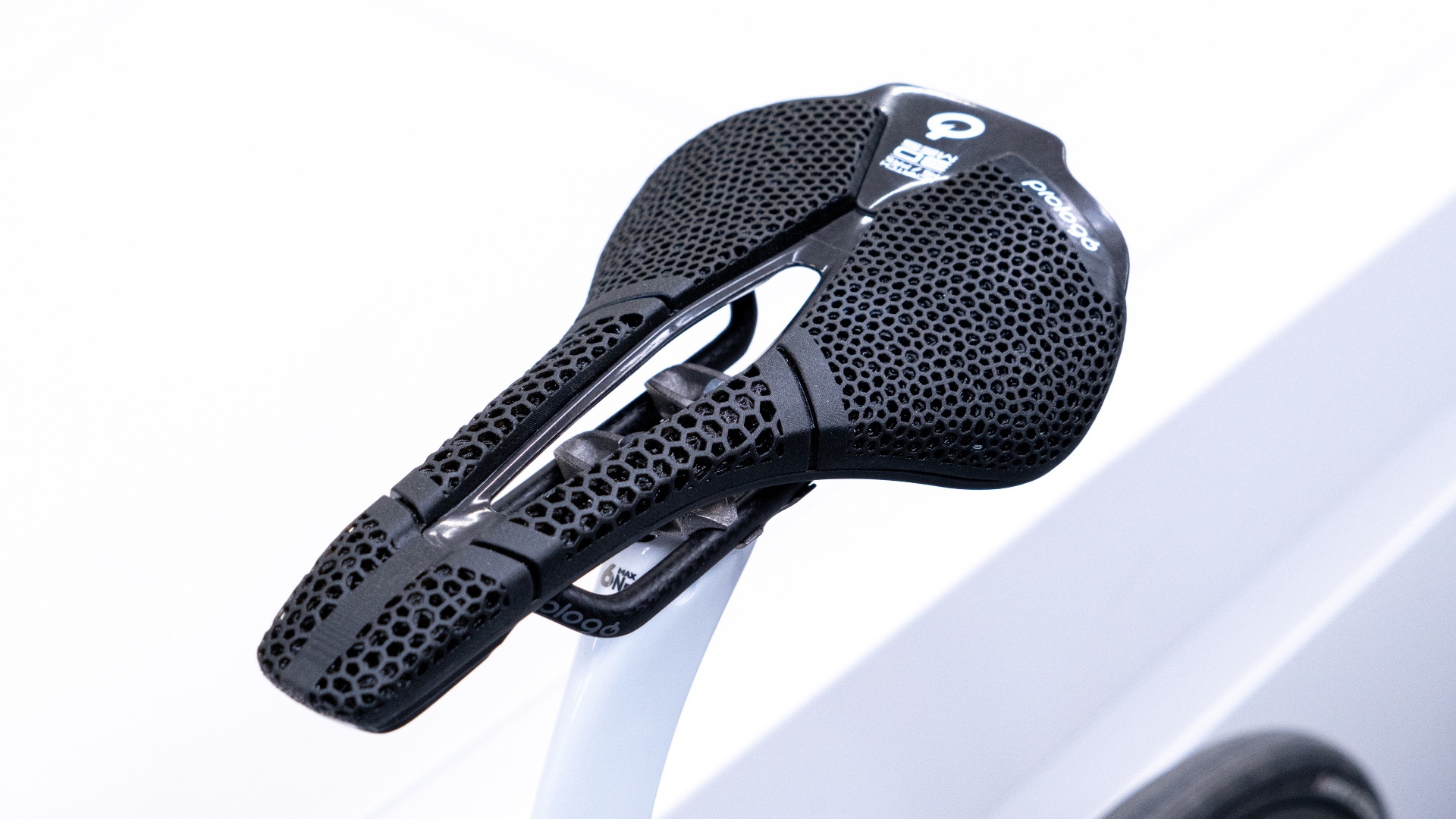 Prologo launches a 3D printed version of its WorldTour approved Scratch M5 PAS saddle
Prologo launches a 3D printed version of its WorldTour approved Scratch M5 PAS saddleThe 3DMSS model features distinct sections with each using different geometric shapes and densities
By Luke Friend